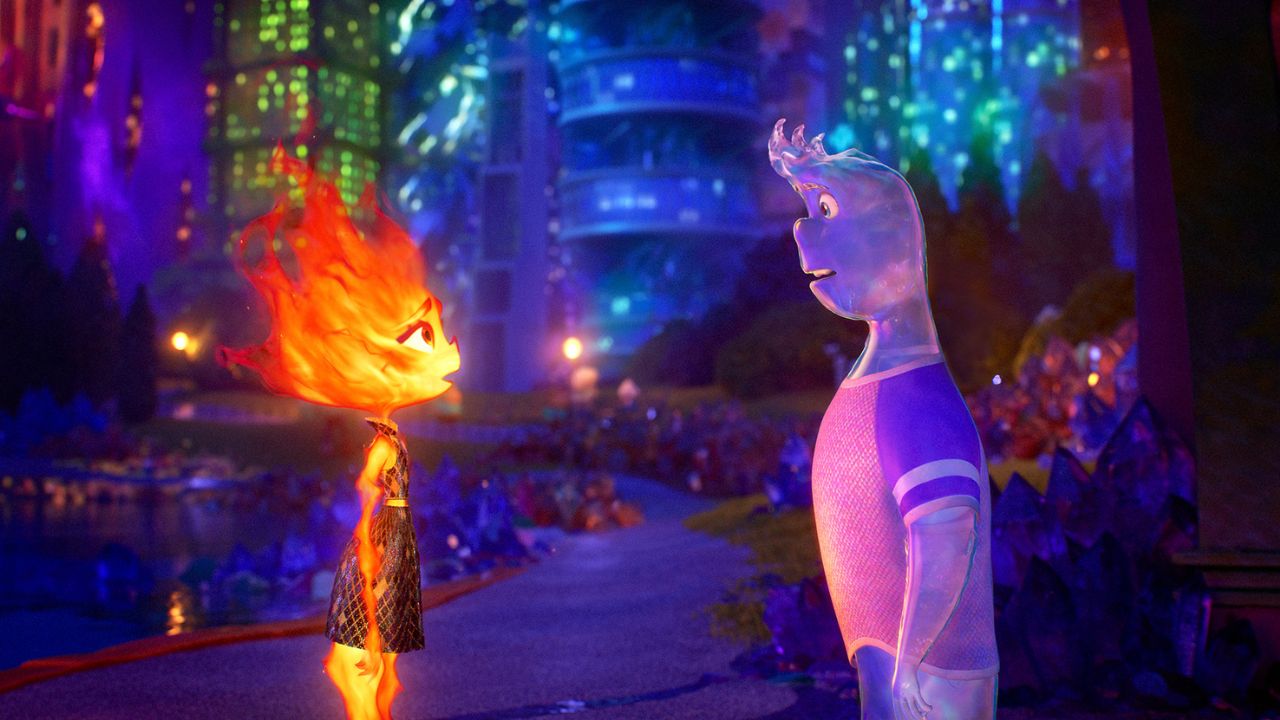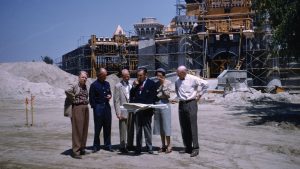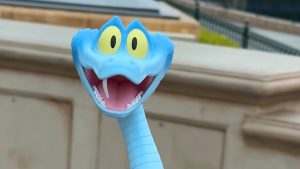Ember and Wade, the two main characters in Disney and Pixar’s Elemental, are visual effects in and of themselves—one Fire and one Water. From the outset, director Peter Sohn emphasized Ember is fire (not on fire) and Wade is water (not a vessel holding water), while also challenging the crew to strike a balance between reality and unique stylization.
“It was really important for Pete that Ember be made of fire, and that when she moved, she moved in a fire-like way and not adhere to a strict, skeletal structure,” visual effects supervisor Sanjay Bakshi explains. “For example, when she reaches for something, her arm can stretch and get really narrow, like fire can. Ember needed to be able to really change shape and be amorphous. While our animators have a lot of tools at their disposal to make a character like Ember angry—from changing her posture, her eyebrows, and her facial expression—we also wanted to change the characteristics of the fire when she got angry.”
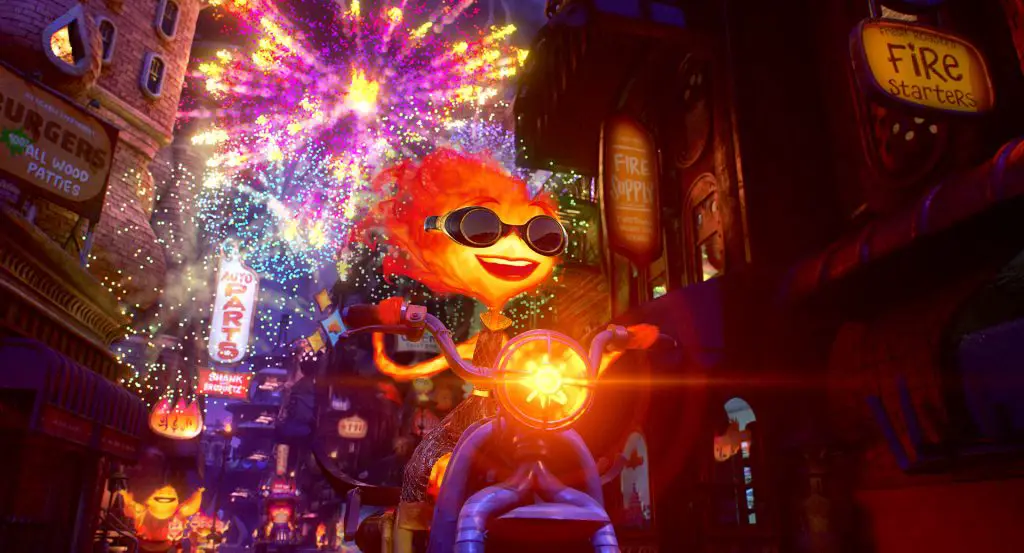
Ember and Wade, the two main characters in Disney and Pixar’s Elemental, are visual effects in and of themselves—one Fire and one Water. From the outset, director Peter Sohn emphasized Ember is fire (not on fire) and Wade is water (not a vessel holding water), while also challenging the crew to strike a balance between reality and unique stylization.
“It was really important for Pete that Ember be made of fire, and that when she moved, she moved in a fire-like way and not adhere to a strict, skeletal structure,” visual effects supervisor Sanjay Bakshi explains. “For example, when she reaches for something, her arm can stretch and get really narrow, like fire can. Ember needed to be able to really change shape and be amorphous. While our animators have a lot of tools at their disposal to make a character like Ember angry—from changing her posture, her eyebrows, and her facial expression—we also wanted to change the characteristics of the fire when she got angry.”
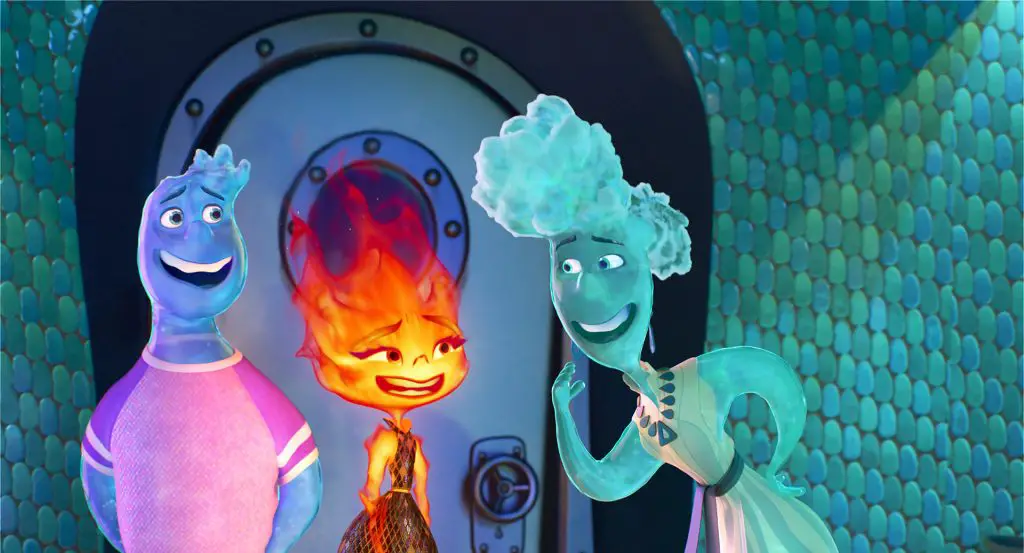
To achieve Ember and the other Fire characters’ unique, stylized look, Pixar tapped resources at Disney Research Studios in Zurich, Switzerland, to help shape ideas into technological innovations. According to Bakshi, this allowed them to “organize the flames into more stylized shapes using a machine learning technique called Volumetric Neural Style Transfer; it’s something we haven’t done before.” If the flames were “too realistic,” he adds, it would be “distracting and not as illustrative as we would have wanted.” Utilizing techniques developed by crowds technical supervisor Paul Kanyuk and the Disney Research Studios team, he says, “It organizes the flames into much more appealing shapes. It really unlocked a lot for us—like a magic trick! There’s no other way to do this that I’m aware of.”
Throughout the production, Marshall adds, “There was a loop between technology and the art department trying to discover what was working and what wasn’t. It was about getting a bunch of experts—a fire expert, a shading expert, an animation expert, a rigging expert, and a lighting expert—in the same room and iterating until we struck the right balance. It was about putting the different technologies together and training them to work together.” Were it not for the team’s unwavering efforts to balance realism with stylization, Bakshi concludes, “I don’t think people could connect with the characters on an emotional level.”
Disney and Pixar’s Elemental is now playing in theaters.

